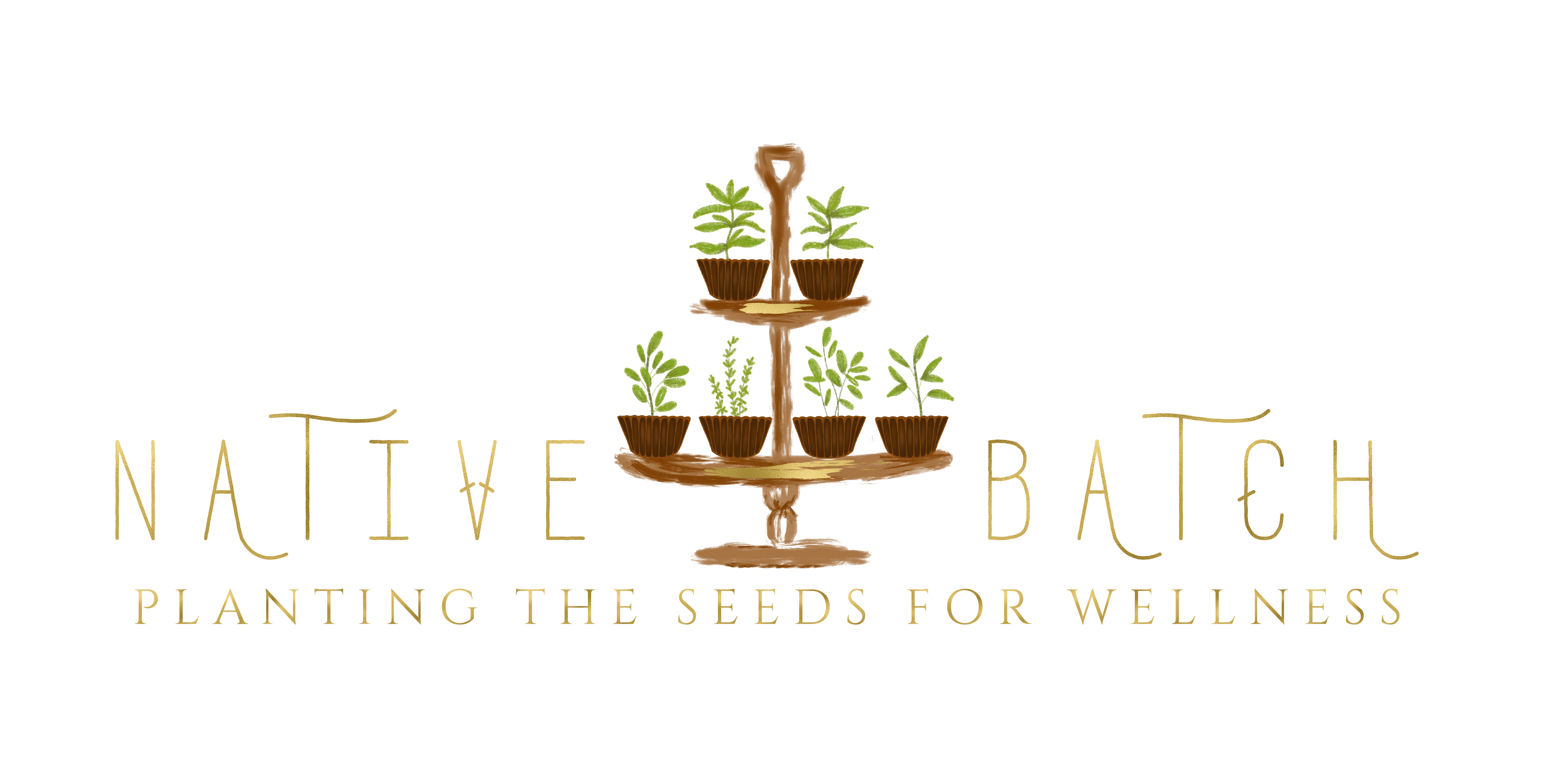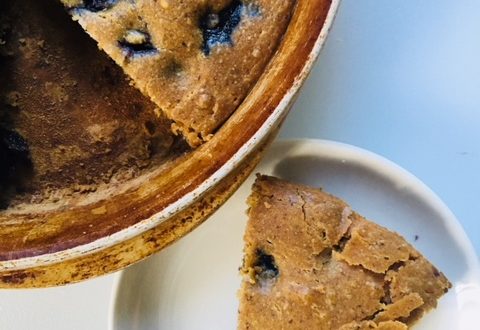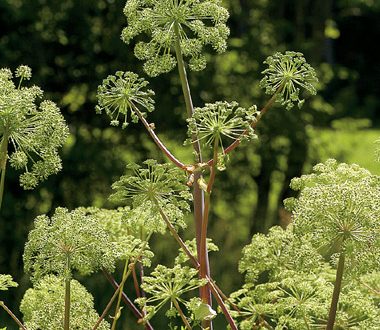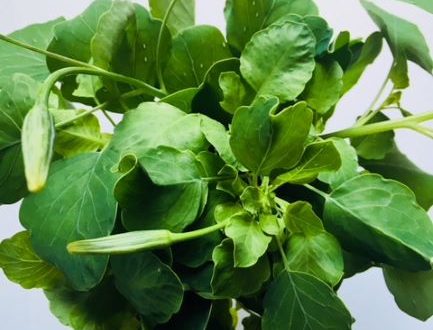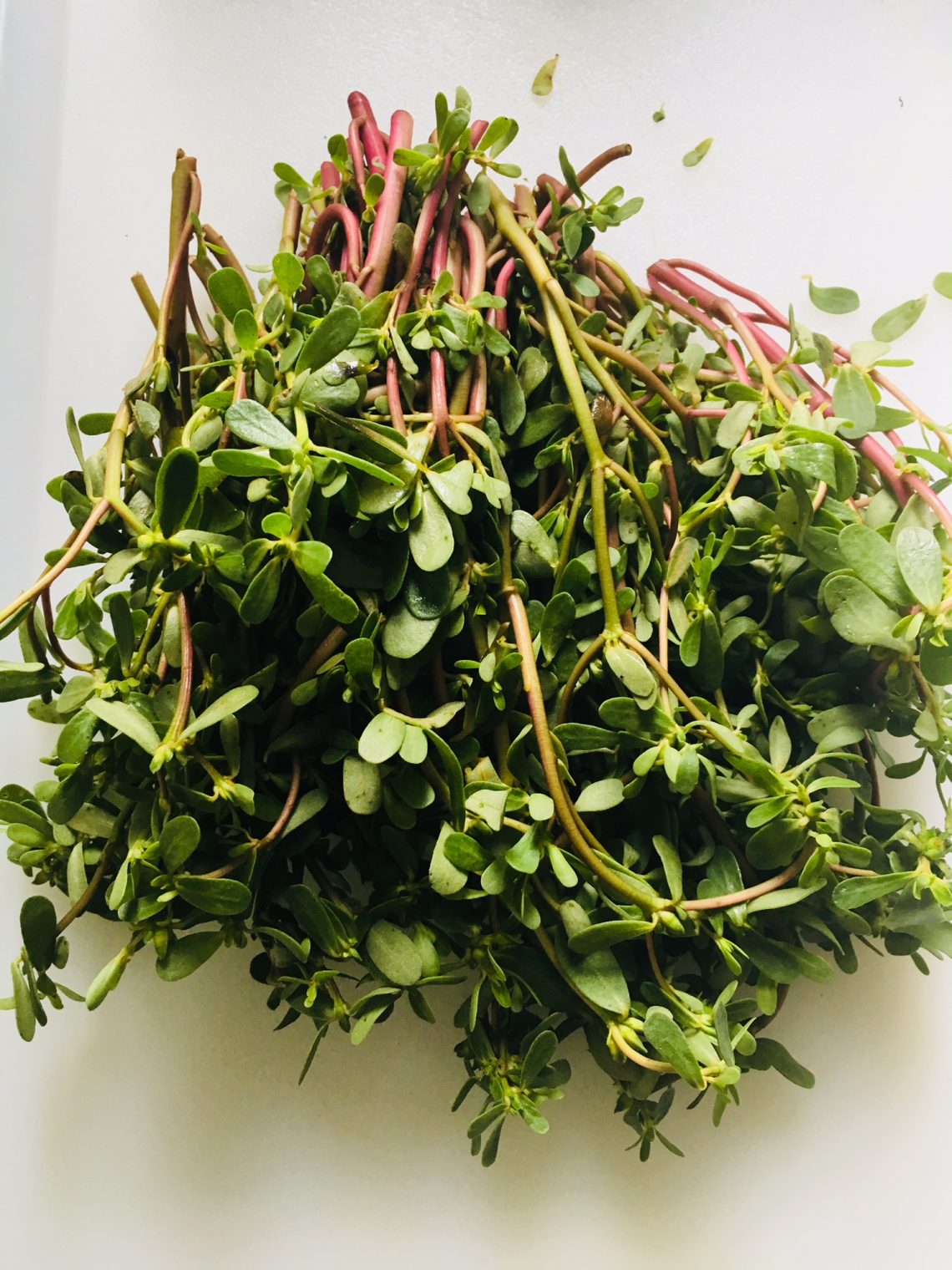
Purslane: The Omega 3 Powerhouse
What would you say if I told you I love eating weeds! Would you look at me like I was crazy? Or would you agree and say I love eating weeds too! For the next couple of blog posts I’m going to be discussing “weeds”. These weeds were greens that back in the day used to be eaten like how we eat spinach and kale today but now they’re starting to make a resurgence back to our dinner table.
When I was a child I remember helping my father in the yard. We would pull weeds to keep our yard looking nicely manicured. The weeds would then be tossed in a heap to be thrown away. When I got older and eventually had my own yard, I did the same thing. The weed killer would be applied, weeds would be pulled and tossed in a pile to be thrown away. I remember particularly the weeds growing in between the sidewalk cracks and how fast they would grow back after being pulled. I never would have guessed then that the same weeds I was pulling from the sidewalk cracks would today be the same weeds I would be purchasing from my farmers market… to consume!
In this blog post I’ll be discussing a plant considered to be a weed called purslane. It’s a “weed” I’ve been eating a lot of lately. It’s quickly turning into a favorite green of mine due to the taste and the benefits. At the end of the post, I’ll also show two easy recipes of how I use purslane. If you’re not a fan of eating weeds, by the end of this post you just might be!

Purslane
Purslane otherwise known as the Latin name, Portulaca Oleracea, is native to South Asia but has spread throughout the world. There are reports showing native people of America eating purslane way before Europeans came to colonize, so it’s believed to have been in America for hundreds of years. Purslane is an annual, hardy, trailing weed which grows in some of the worse conditions, like in between sidewalk cracks. 🙂 It’s also been known to grow in gardens, rocky areas, barnyards and any disturbed areas like city lots. Purslane is a succulent so it can adapt itself to the toughest environment, it’s what makes this plant very resilient and drought resistant. The leaves are thick, fleshy and bright green. The stems are red and green and also thick and fleshy. Small yellow flowers bloom on the plant in midsummer and the fall. And reports show that seeds of purslane can stay viable in the ground up to 40 years. This may be the reason why this weed might pop up in the middle of a garden without even being planted. Not only will it show up but if not tended to, it might take over.
The Health Benefits of Purslane
- Fresh purslane leaves have more omega 3 fatty acids than any other green leafy plant. This is huge! Omega 3 is beneficial for brain health, eye health, heart health and can help ease inflammation of the joints caused by osteoarthritis or rheumatoid arthritis.
- Purslane has some of the highest levels of vitamin A among leafy green vegetables. Vitamin A is known to be extremely powerful antioxidant, helpful for eye health and great for the skin.
- Purslane has high amounts of vitamin C. And we all know vitamin C is a great immune system booster. It’s also an antioxidant which helps to fight cancer.
- Comparing calorie to calorie between purslane and bananas, purslane has more potassium than bananas. High potassium helps to improve muscle mass in older people. Also potassium helps to maintain a balance between the acid-base in the body.
- Comparing with kale, purslane has more magnesium and vitamin E. *Magnesium is an essential micromineral needed for the body. It’s so important that it’s responsible for the proper functioning of hundreds of enzymes. It helps to maintain healthy heart muscles and healthy bones. Having enough magnesium in the body can also alleviate premenstrual symptoms. Vitamin E is an antioxidant good for skin care and overall health care.
- Purslane also has trace properties of complex B vitamins, calcium and iron.
What Does Purslane Taste Like?
I think purslane has an amazing flavor! It has a lemony flavor with a peppery kick like arugula. Raw, the texture is crisp and because of the retained water in the leaves, it’s juicy. The leaves, stems and yellow flowers are edible. However closer to the roots the stems can become tough, so you definitely want to cut those off before eating. Purslane was actually written about and was common in cookbooks all the way up to the twentieth century. Back then it was considered as a garden crop and not a weed to be thrown away.
There’s historical reports that George Washington ate pickled purslane, served by his wife Martha. Mahatma Gandhi wrote about the nourishing properties of purslane in his magazine called Harijan, Gandhi not only ate the greens himself, he also recommended purslane to many people. And in Henry David Thoreau’s book called “Walden”, Thoreau had this to say about purslane:
“I learned from my two years’ experience that it would cost incredibly little trouble to obtain one’s necessary food, even in this latitude; that a man may use as simple a diet as the animals, and yet retain health and strength. I have made a satisfactory dinner, satisfactory on several accounts, simply off a dish of purslane (Portulaca oleracea) which I gathered in my cornfield, boiled and salted. I give the Latin on account of the savoriness of the trivial name.”
Where To Find Purslane
The season for purslane is May to late August. I would suggest during purslane season going to your local farmers market to find it. I bought my big bunch of purslane at my local farmers market (for only $1 🙂 ). You can also try looking for it at any Asian markets. Another way to get purslane is just by planting it yourself. It’s easy to plant and can be planted in a pot or in the ground. Lastly I would say you can just go forage for wild purslane because it’s just about everywhere, however I would suggest taking precautions due to pesticides and sprayed chemicals. Also consulting with a professional forager would be wise. Once bought or picked, purslane will only last a couple of days stored in your fridge. So it’s best to use it quickly.
How To Prepare Purslane
Frying and boiling greatly diminishes the nutrients. When preparing purslane it’s best to try and retain as many nutrients as possible. Serving it raw is one of the best ways to do this. Raw purslane makes a great addition to a salad, sandwich or a fresh topping over a cooked pizza. Some people even add purslane to their scrambled eggs. If you want to cook purslane, the best way to cook a bunch of purslane is by slowing stewing or steaming it. When I prepare purslane I like to keep some of the crispness of the green in tact. And if I stew purslane I also drink the stewing liquid to drink all the nutrients that might have seeped out during the stewing process. *As a side note when high vitamin C vegetables are boiled, they lose at least 50% or more of their vitamin C properties.
To prepare purslane for long term storage, here’s a couple of videos showing how:
Final Thoughts
Purslane went from being a highly, nutritious, green vegetable to being considered just a weed to be thrown away. The question is “why”? This is a green that is cost effective, easy to grow and can be grown just about anywhere. On top of that, the flavor of this plant is very pleasant. I find it more much more pleasant than both kale and spinach. This is also a green that can help everyone! Just imagine purslane being served in a soup kitchen. It’s cheap, filling, delicious and nutritious.
If you’ve never tried purslane before, please try it and leave a comment below to tell me what you think. And if you’ve already tried purslane and love it, leave a comment below telling me how you like to eat it. 🙂
Recipes
Here are two easy recipes of how I like to use purslane.
Purslane Pesto
This pesto is a great way to use purslane. It's easy to make and great to use as a dip, pasta sauce or base for a pizza.

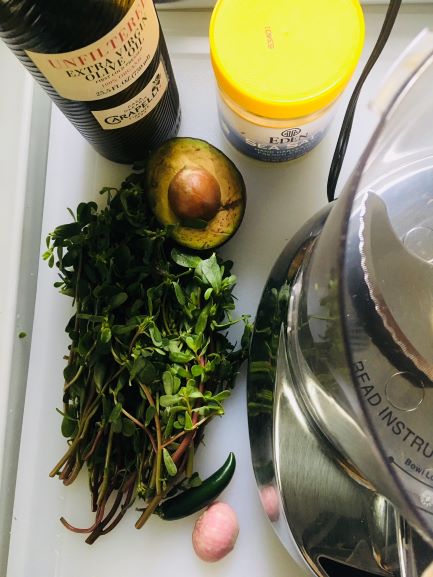
Place all the ingredients in a food processor except the olive oil. Blend till it all comes together scraping down the mixture periodically.
Once blended add the 2 Tablespoons of olive oil and blend till the mixture because smooth. Pour the pesto in a glass jar to store. Will keep for about 5 days.
This pesto is a great dip. I use it to dip my sweet potato fries in. 🙂
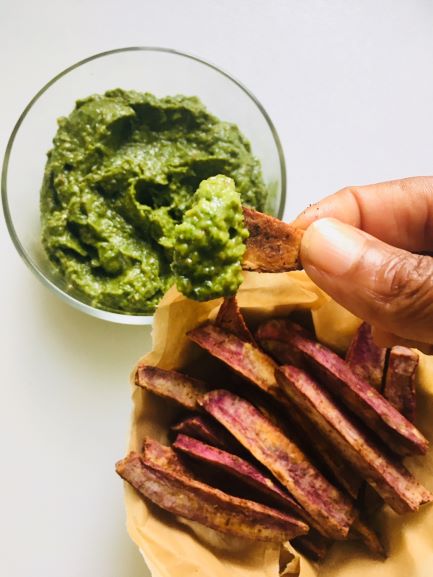
Ingredients
Directions

Place all the ingredients in a food processor except the olive oil. Blend till it all comes together scraping down the mixture periodically.
Once blended add the 2 Tablespoons of olive oil and blend till the mixture because smooth. Pour the pesto in a glass jar to store. Will keep for about 5 days.
This pesto is a great dip. I use it to dip my sweet potato fries in. 🙂

Quick Stewed Purslane Greens
This recipe is a very simple quick stewed greens recipe using purslane. It's a nutritious side dish or can be eaten as a whole meal.
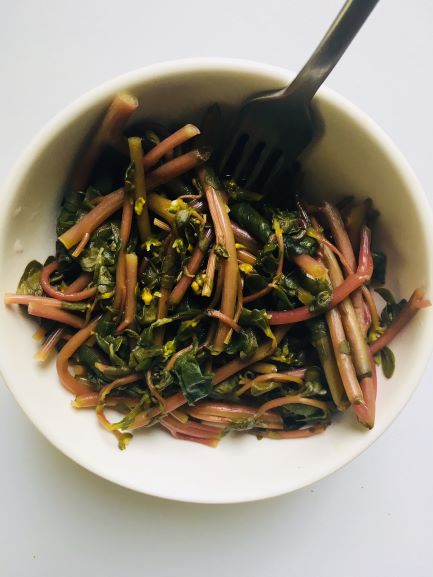
Wash the purslane very well. I wash the purslane in a baking soda and water solution ( a bowl of water with 2 tablespoons of baking soda). Then pat dry the purslane by rolling up the purslane in a tea towel . Cut the purslane into smaller 3 inch sizes.
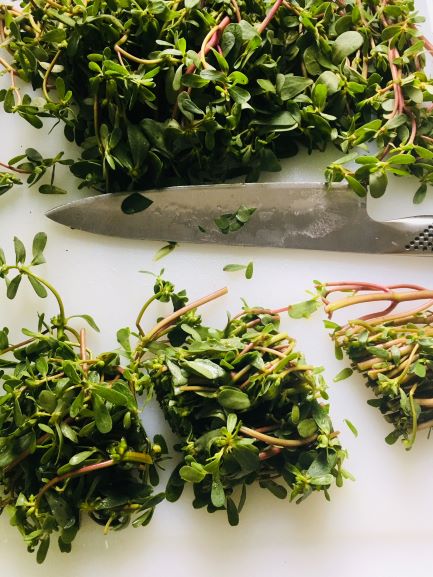
On low to medium heat place in the pot, the water, purslane, onion powder, sea salt and olive oil. When it starts to simmer put the lid on the pot. Cook purslane until it becomes slightly soft but still has a little crisp to the stems which will take about 10 minutes.
As you can see just like regular greens, they cook down quite a bit. Store any leftovers in a glass container and place in the refrigerator, it will keep for about 5 days.

Just like the late great essayist, poet and philosopher, Henry David Thoreau. I can eat a whole bowl of this and be satisfied. 🙂
"I learned from my two years' experience that it would cost incredibly little trouble to obtain one's necessary food, even in this latitude; that a man may use as simple a diet as the animals, and yet retain health and strength. I have made a satisfactory dinner, satisfactory on several accounts, simply off a dish of purslane (Portulaca oleracea) which I gathered in my cornfield, boiled and salted. I give the Latin on account of the savoriness of the trivial name." Henry David Thoreau

Ingredients
Directions
Wash the purslane very well. I wash the purslane in a baking soda and water solution ( a bowl of water with 2 tablespoons of baking soda). Then pat dry the purslane by rolling up the purslane in a tea towel . Cut the purslane into smaller 3 inch sizes.

On low to medium heat place in the pot, the water, purslane, onion powder, sea salt and olive oil. When it starts to simmer put the lid on the pot. Cook purslane until it becomes slightly soft but still has a little crisp to the stems which will take about 10 minutes.
As you can see just like regular greens, they cook down quite a bit. Store any leftovers in a glass container and place in the refrigerator, it will keep for about 5 days.

Just like the late great essayist, poet and philosopher, Henry David Thoreau. I can eat a whole bowl of this and be satisfied. 🙂
"I learned from my two years' experience that it would cost incredibly little trouble to obtain one's necessary food, even in this latitude; that a man may use as simple a diet as the animals, and yet retain health and strength. I have made a satisfactory dinner, satisfactory on several accounts, simply off a dish of purslane (Portulaca oleracea) which I gathered in my cornfield, boiled and salted. I give the Latin on account of the savoriness of the trivial name." Henry David Thoreau

References
https://www.emerald.com/insight/content/doi/10.1108/NFS-11-2012-0123/full/html
https://web.extension.illinois.edu/cfiv/homeowners/030726.html
https://ods.od.nih.gov/factsheets/Magnesium-HealthProfessional/
https://www.ncbi.nlm.nih.gov/pubmed/23953803
https://www.ncbi.nlm.nih.gov/pubmed/22332096
https://www.medicalnewstoday.com/articles/287212.php
https://nutritiondata.self.com/facts/vegetables-and-vegetable-products/2604/2
http://labs.eeb.utoronto.ca/mcandrews/PDFs/Precolumbianpurslane_1975.pdf


